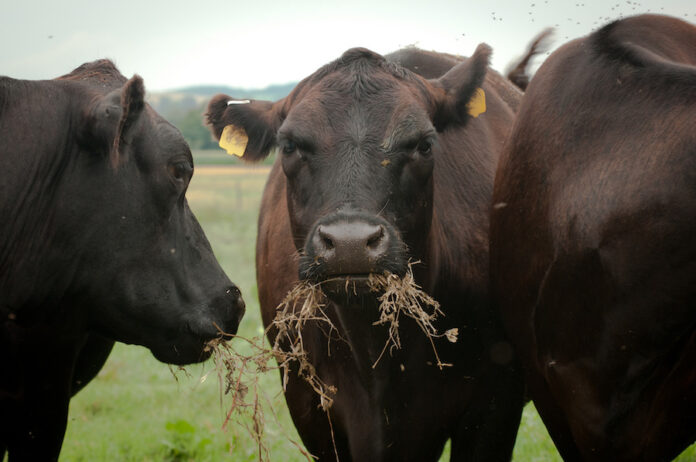![USDA / LANCE CHEUNG [CC BY 2.0] / FLICKR](https://theaggie.org/wp-content/uploads/2016/11/air_op.jpg)
 Emissions at forefront of obstacles to animal sustainability
Emissions at forefront of obstacles to animal sustainability
One of the most prominent issues in sustainable animal agriculture today is debunking the idea that not eating meat is the best way to reduce carbon emissions from livestock.
The amount of news articles claiming that meat will be the destruction of Earth has grown dramatically in the last few years. CNN, The Washington Post and many other news outlets have all released pieces against animal agriculture. Many of these reports have actually been revised because they presented incorrect information to the public.
The beef cattle industry bears the brunt of bad publicity, mainly around issues of water consumption and land usage.
The amount of beef cattle raised in the United States has decreased by 36 percent since 1950, says the UN’s Food and Agriculture Organization’s (FAO) Livestock Environmental Assessment and Performance Partnership (LEAP). Because of this great reduction in the number of cattle, ranchers use less water and occupy less land.
Additionally, Frank M. Mitloehner, a UC Davis animal science professor, says 70 percent of the land used to raise beef is non-arable. This means the land cannot be used to grow plant-based foods because of the poor soil quality. But cattle take advantage of the land by grazing on native grass species, which helps maintain the overall biodiversity of the ecosystem. Their excrement also provides helpful nutrients, like carbon and nitrogen, for plants and soil.
Livestock agriculture has been fighting an uphill battle since the FAO’s 2006 book Livestock’s Long Shadow claimed that livestock was responsible for 18 percent of global CO2 greenhouse emissions. After further investigation, it was found that the experimental data that generated this value was not performed correctly.
The FAO performed a life cycle analysis (LCA), tracking livestock from birth to death and measuring the carbon footprint of everything that goes into raising animals, from feed and bedding to transportation and processing. This data was compared to the transportation sector. But the same detailed LCA was not applied to vehicles, which skewed the data.
In order to properly determine the true carbon footprint of livestock, the FAO created LEAP in 2012, which unified the agricultural sector in efforts to reduce its emissions output.
Since then, the carbon footprint of livestock has been estimated at 14 percent of all emissions — far less than the footprint of the transportation sector. In the United States, beef cattle production accounts for only about 4 percent of carbon emissions, says Mitloehner.
Various large organizations believe that reduced meat intake is a viable approach to lower the amount of pollution cattle produce through their digestive systems. But while lowering intake of red meat can be beneficial for one’s health, abstaining from meat isn’t plausible to address carbon emissions.
Too many people across the globe, especially in developing countries, rely on livestock as a primary source of income, says Ermias Kebreab, a UC Davis animal science professor. Not only will this drastically impact the lower-income population, but eliminating the beef industry will be detrimental to plant-based agriculture.
Manure from livestock is used as fertilizer to provide nutrients to crops in place of chemical fertilizers. While some claim compost does the job just as well, the science doesn’t agree. Compost is a soil stabilizer and does not “feed plants.”
There isn’t yet a clear-cut solution to the many issues facing the environment stemming from the livestock industry, and one solution is unlikely to be found.
The livestock sector is not perfect. There is still a lot of room for improvement, from reducing water usage to improving general management. While there have already been significant improvements in the last 60 years, there is still a long road ahead if livestock agriculture is going to attain its goal of achieving true sustainability.
Written by: Alice Rocha — asrocha@ucdavis.edu
Disclaimer: The views and opinions expressed by individual columnists belong to the columnists alone and do not necessarily indicate the views and opinions held by The California Aggie.




